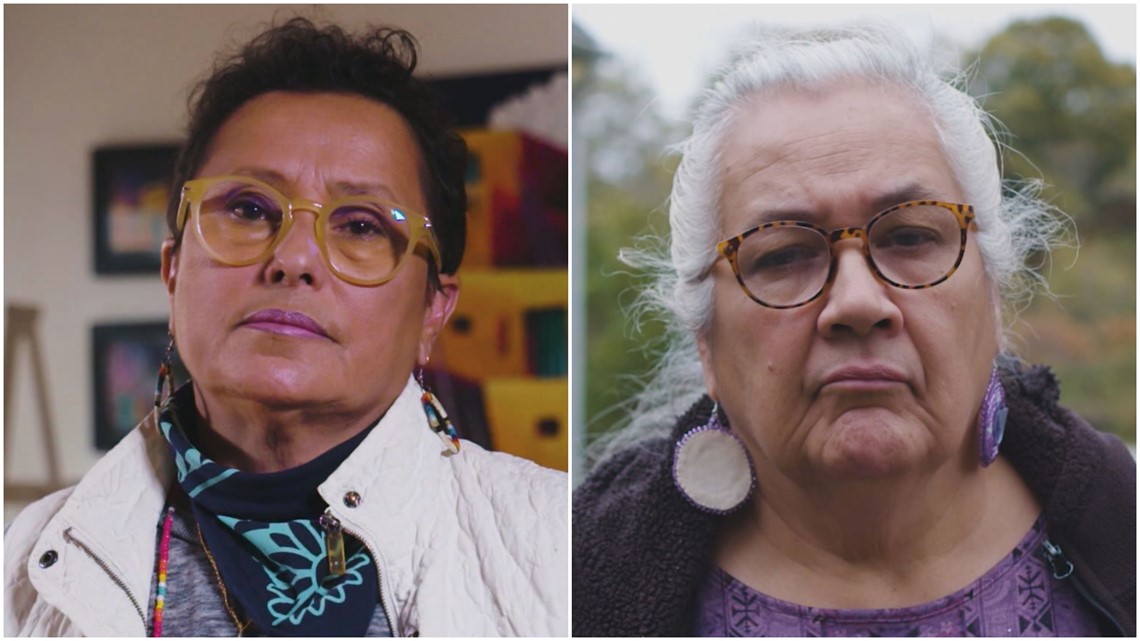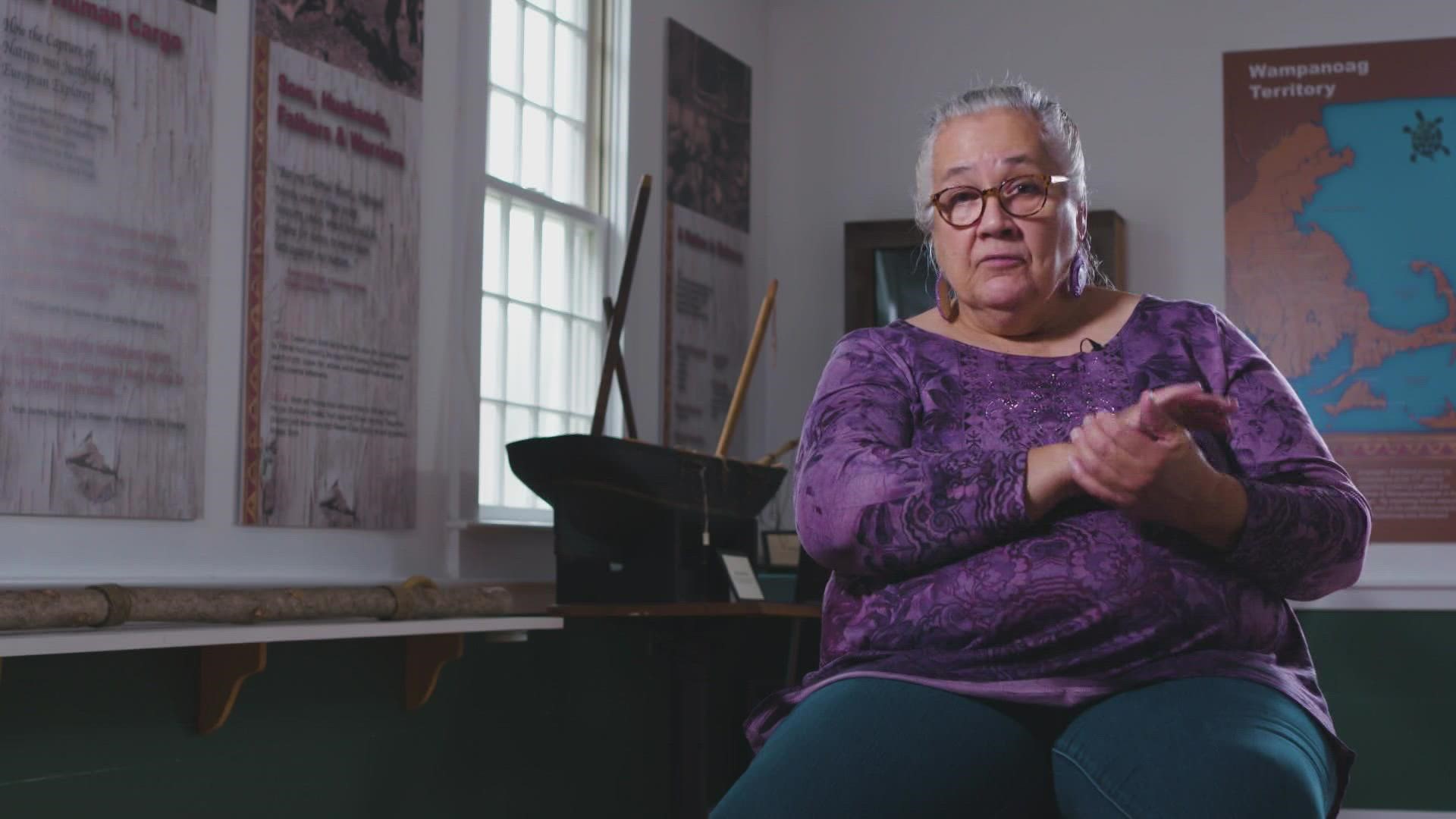PLYMOUTH, Mass. — Always on the trail for the truth, Matika Wilbur is a filmmaker, photographer, and podcaster who is seeking out Indigenous stories. In 2012, she started Project 562, a project dedicated to photographing over 562 federally recognized tribes.
"I'm from the Swinomish and Tulalip tribes here in Washington state,” said Wilbur. "I've been to over 400 tribal communities."
Her work involves traveling the country. One of her many stops was in Massachusetts.
"When I was in Wampanoag territory, I was deeply taken back by the story of Thanksgiving,” said Wilbur. “I think we think of Thanksgiving, we’re imagining a false narrative."
"Until we are honest with one another about the first stories of this land and the first people of this land, we can't move forward,” Wilbur added.
It was a topic discussed in her podcast with scholars Linda Coombs and Paula Peters, who are members of the Wampanoag Tribe.


KING 5's Facing Race team flew to Massachusetts to meet them.
"My ancestors went through this horrific experience,” said Coombs, who is originally from Martha’s Vineyard and the Aquinnah Wampanoag Tribe.
"It makes me angry. My ancestors were treated so badly, but there’s a certain amount of satisfaction that comes from being able to bring the story out,” said Peters, who is from the Mashpee Wampanoag Tribe.
The vibrance of Wampanoag culture is undeniable at Peters' store, the Wampanoag Trading Post and Gallery in Mashpee, Massachusetts.
“I think it is really important to look back, especially around this 400th anniversary,” said Peters.
According to historians, in the 17th century, Pilgrims broke away from the Church of England for religious reasons. They went to Holland where they were free to practice their religion. After about a decade of struggles, including tough economic times, more than a hundred men, women and children boarded the Mayflower. They spent 66 days at sea before arriving at Cape Cod on Nov. 11, 1620. They eventually sailed up the coast to where the Wampanoag Tribe had lived and settled in, according to the historians at Plimoth Patuxet Museums.
Some books say a year later, the Wampanoag people and Pilgrims happily gathered for the first Thanksgiving feast. That's the story you might have heard.
"There's just so much bunk around that,” said Peters. “To play along with it is to bury a lot of real history."
"Plymouth Rock, it is supposed to symbolize where the Pilgrims stepped off the Mayflower when they landed,” said Coombs.
"This myth around the Plymouth Colony that is stamped right on the rock, 1620, that that's when everything begins, like, that there was nothing that happened before or after,” said Peters.
When it comes to Thanksgiving, Peters and Coombs are trying to separate fact from fiction. The truth is, European traders were around a century before the Pilgrims came.
"There were ships coming over to this coast here since 1524,” said Coombs.
And what happened over the next 100 years set in motion a series of tragic events that would devastate the Wampanoag population.
"There was a huge plague that swept through,” Coombs explained. "It came from European fisherman."
"People got very sick quickly, and there was what they call the Great Dying,” said Peters. "There wouldn't even have been this space for the Plymouth village if all of those people had not been wiped out by a plague."
The backstory also involves violent encounters with Europeans capturing the Wampanoag people.
"And people were sold into slavery in England or in Spain,” said Coombs.
So when the Pilgrims arrived, Massasoit, a Wampanoag leader, had to carefully consider what to do.
"Massasoit decided to form an alliance with the English,” said Coombs.
"It was more a strategic decision. It was not something that he was doing, really out of the kindness of his heart,” said Peters.
"They had weapons that we didn't have, guns and he's thinking of protecting his people,” Coombs added. “To say that we were making friends is just, it's ridiculous. And it dishonors history."
When it comes to the history behind the first Thanksgiving, Coombs and Peters say there has been so much misinformation.
"It doesn't say, the Pilgrims invited the Indians. It just says that Massasoit showed up," said Coombs.
Peters added that he showed up with 100 warriors.
"They came because they heard the sound of muskets,” said Peters. “But it was certainly not, 'Let's invite our Wampanoag neighbors to our Harvest Dinner.'”
Peters and Coombs say what happened in the following years was tragic.
"In order to settle there, you have to do something with the people that are already there. And if you're not going to kill them outright, which is a method that was used, then you do all these other things like Christianize them, educate them, try to make them like you,” Coombs explained.
Over time, the Thanksgiving lore has rendered Indigenous people almost invisible.
"There is a distinct memory that I have of being a second-grader in school. The story was told by the teacher, and one of the other students said, ‘What happened to all of the Indians?’ And the teacher said, ‘Oh, they all died of a plague.’ And I had to raise my hand and say, 'No, they didn't, because I'm still here,'” Peters recounted.
"I think it is ludicrous. We have been disregarded and treated like our part in this history doesn't matter,” said Coombs. “Like it or not like it, the history is what it is, and they came and took our land in order to start a colony here and that is just the truth of it.”
"It's time to bring out these stories of truth about Indigenous people that are really important,” said Peters.
That is exactly the mission Wilbur is on as she continues to tell the true stories about Indigenous people.
"It's very uncomfortable to think about what happened in the settlement of America,” said Wilbur. “I believe that our humanity encourages us to get to know one another. And to me, how we break down some of these barriers and overcome some of these stereotypes is by being in a good relationship with people that look different than us. And I think that's really the way forward."

